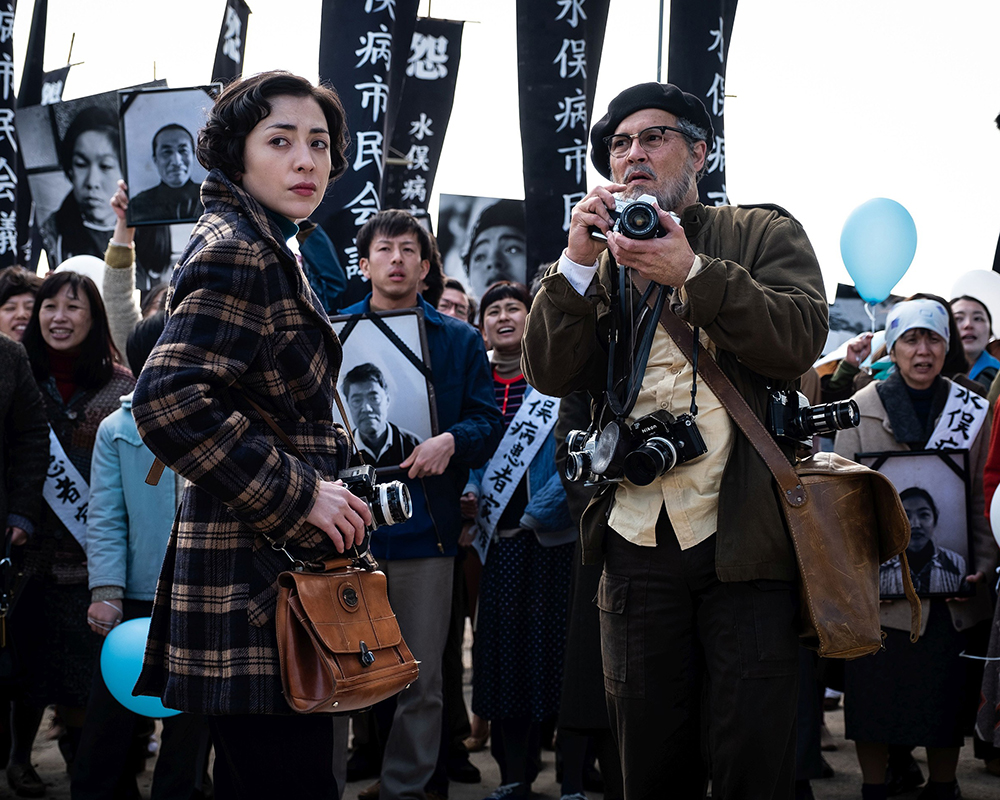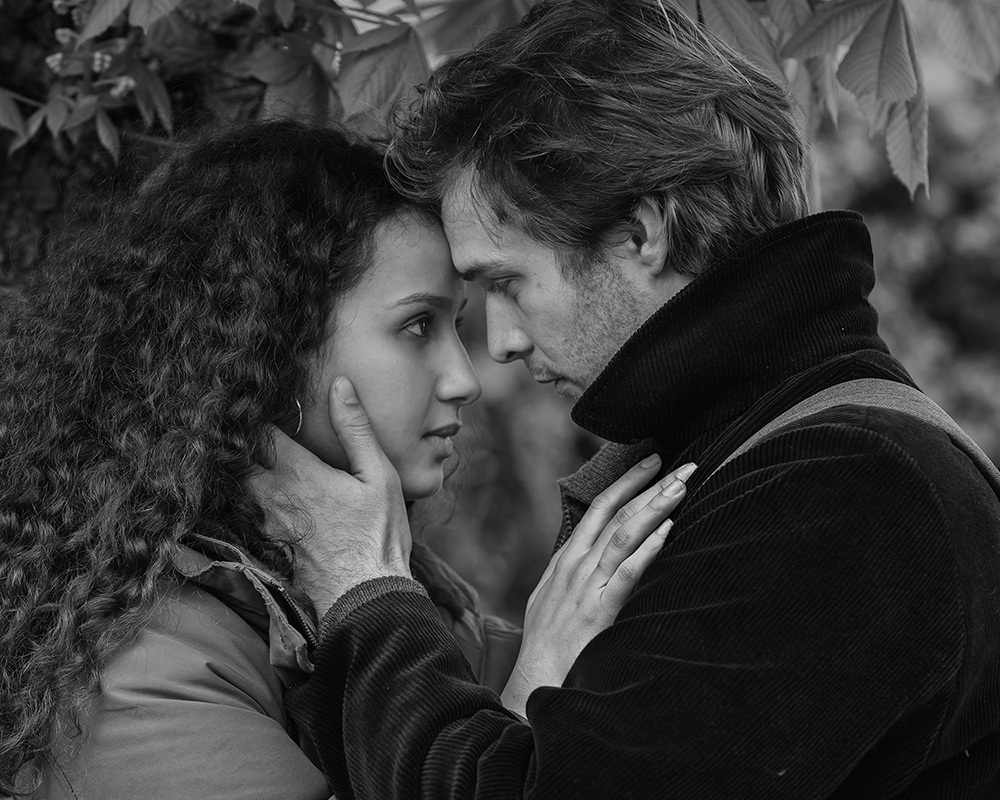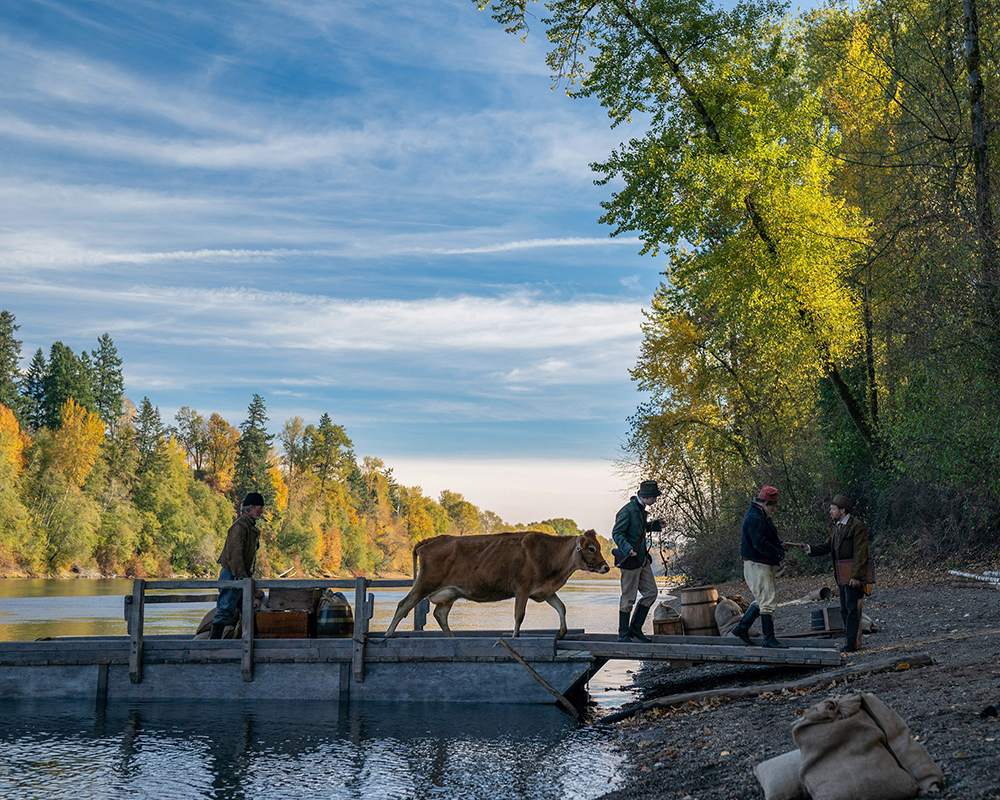There’s an undeniable romance to mid-Nineties New York. Absent of the chirp of mobile phones, or the swirl of social media, it comes across as a more halcyon age, closer to the Forties than the Noughties. It makes the perfect setting for Berlin International Film Festival opener My Salinger Year, Philippe Falardeau’s gentle adaptation of Joanna Rakoff’s elegant and much-loved memoir detailing her fledgling career at a Manhattan literary agency.
At just 23 and fresh out of college, Joanna (Margaret Qualley) has moved in with her new beau, Don (Douglas Booth), an armchair socialist who likes to swing his opinions about and dreams of becoming a novelist. Joanna has similar literary ambitions, but also possesses the nous to realise she has to make rent and eat.
She takes a job as an assistant at an anachronistic literary agency (in real life it was Harold Ober Associates), that still uses tape Dictaphones and Selectric typewriters. On her first day, her austere boss Margaret (Sigourney Weaver) takes Joanna into her office and says, “We need to talk about Jerry”. The Jerry in question happens to be one of the greatest writers of the 20th Century – J.D. Salinger.
Consequently, along with more menial tasks, Joanna’s days are spent replying with a standard "thank you and goodbye" to ardent fans, whose missives range from the banal to the deranged. But the letters start to get under her skin, and she becomes puzzled at the willingness of the authors to bare their souls to a stranger, even if it is Salinger. EM Forster’s "only connect" couldn’t be more pertinent. Falardeau’s conceit is to have these letters acted out, a smart, if under used approached.
But the Salinger side of the story isn’t the real heart of the tale. Joanna is insecure about who she is, who she wants to become, and how she’s going to be able to stand on her own feet. Qualley, who most recently starred in Tarantino’s Once Upon a Time in Hollywood, captures the familiar sense of self-doubt that comes with youth, and does it with effortless charm. Weaver meanwhile lends a steely charm, reminiscent of Meryl Streep’s Miranda Priestly in The Devil Wears Prada, as a woman who sees the world she loves shifting under her feet, going from a culture that loves writing to a business that’s all about figures.
My Salinger Year is a familiar tale of someone going out into the world and trying to make it. But it’s also a tale full of charm and intelligence, deftly capturing a world that has sadly vanished.
Minamata **** LIFE photographer W. Eugene Smith earned a reputation as a brilliant but irascible photographer who was often the bane of his editor, Robert Hayes. Despite his reputation for being troublesome, his dedication to the art form led to him capturing some of the most powerful war photography of the 20th Century.
LIFE photographer W. Eugene Smith earned a reputation as a brilliant but irascible photographer who was often the bane of his editor, Robert Hayes. Despite his reputation for being troublesome, his dedication to the art form led to him capturing some of the most powerful war photography of the 20th Century.
Smith is now the subject of a new biopic, Minamata, which recently played at the Berlin Film Festival. Directed by artist and director Andrew Levitas, the film charts Smith’s 1970s investigation into the mercury poisoning of a small Japanese fishing village by a chemical company, and makes for compelling and affective viewing.
There are few more appropriate directors than Levitas. Being a photographer, sculptor and painter, he brings a medley of art forms to the film and storytelling process. His ability to bring Smith’s images to life and put us behind the camera in order to capture the photographer’s process, is both elegant and effective. Playing with light, whether the blood reds and ink blacks of Smith’s photo labs, or the slick film of mercury that covers the shores of the village, Levitas brings us closer to the horror and humanity of the tragedy.
Johnny Depp is suitably cast as the cantankerous, alcoholic photographer, playing the character with a degree of charm and wit that will remind you how effective an actor Depp can be. When we meet Smith, he’s washed-up, suffering from PTSD self-medicated with whiskey and barbiturates. Then he encounters Aileen (Minami) who reminds him that he still has a responsibility to speak truth to power, telling him he has to tell the world about the atrocities happening in Minamata.
Inevitably, a story such runs the risk of being a "white saviour" narrative, but Levitas is clearly keenly aware of such issues, and provides space to allow the Japanese cast to shine, including an impassioned performance from Hiroyuki Sanada. Levitas is as interested in the people Smith captured in his photos as he is with the legendary photographer himself. The black and white tableaux of Smith’s iconic images, including the moving "Tomoko Uemura in Her Bath", are exquisite experiments in the interplay of the moving and static image, where the focus is on the kindness of a mother amidst the horrors inflicted on her child.
It’s a fitting tribute to both Smith and the victims of an unnecessary tragedy, which detours from standard biopic fare towards something closer to the power of Smith’s photographic essays.
The Salt of Tears ** It comes as a surprise that Philippe Garrel’s latest film is so entrenched in cliché. The writer Jean-Claude Carrière (with a co-writing credit from Arlette Langmann) was behind wonderful screenplays such as Jonathan Glazer’s Birth and Luis Buñuel’s The Discreet Charm of the Bourgeoisie. So what went wrong?
It comes as a surprise that Philippe Garrel’s latest film is so entrenched in cliché. The writer Jean-Claude Carrière (with a co-writing credit from Arlette Langmann) was behind wonderful screenplays such as Jonathan Glazer’s Birth and Luis Buñuel’s The Discreet Charm of the Bourgeoisie. So what went wrong?
Luc, played by Logann Antuofermo, is the son of a provincial carpenter (André Wilms) who dreams of a better life for his only child, and so encourages him to apply for a prestigious woodworking school in Paris. Father and son appear incredibly close, but Luc masks his philandering ways from his father and, over the course of the film, works his way through a series of love affairs.
Garrel’s latest work, shot in black and white, echoes the spirit of the French New Wave, but its tropes are so well worn it verges on a threadbare parody. Luc, described by one lover Djemila (Oulaya Amamra) as a “gentle guy”, is anything but, proving instead to be a self-indulgent man-child.
Anti-hero or not, it’s a dull watch, with a plot that conveys nothing of contemporary society and so feels anachronistic in the extreme. Luc will happily walk up to or stalk women in the street in order to secure a date, making this young man come across as a social dinosaur. It feels like Garrel, who is in his seventies, and Carrière who is older, have failed to engage with societal shifts, preferring to believe that it’s still the 1960s. That said, there are some strange and ill-judged references to contemporary issues. A racial attack outside a Parisian club is one that comes so out of the blue you question why it made it past the first draft of the script.
The plot is also laden with ham-fisted metaphors about opening and closed doors that refer to the consequences of the choices we make in youth. Likewise, the clunking metaphors about joinery and carpentry will make you want to groan. And, even though the film has a contemporary setting, everyone seems to communicate by letter - apparently this version of Paris is yet to receive the benefits of 4G.
Luc sleeps with one woman after another before a tragedy awakens him to reality. Nothing is more tiresome than old men trying to recapture their youth, and it seems that is exactly what Garrel is doing. In the end, The Salt of Tears feels like Garrel is parodying his own work, with unintentionally laughable results.
First Cow ***** The American Frontier is given a tender twist in Kelly Reichardt’s latest film First Cow. It's based on Jonathan Raymond’s novel Half Life, which blends the Thoreauvian backdrop of 19th Century Oregon with an odd couple tale of male friendship.
The American Frontier is given a tender twist in Kelly Reichardt’s latest film First Cow. It's based on Jonathan Raymond’s novel Half Life, which blends the Thoreauvian backdrop of 19th Century Oregon with an odd couple tale of male friendship.
The film opens in the present day, where a young woman walking her dog uncovers two skeletons lying side by side. We are then gently transported back nearly two centuries to see a gentle forager, Cookie Figowitz (John Magaro), gathering mushrooms. As he hunts for fungi he comes across a naked Chinese immigrant, called King Lu (the remarkable Orion Lee), hiding in the undergrowth.
A simple act of kindness leads to a friendship, in which the pair embark on a get-rich-quick scheme involving them baking oily cakes (aka doughnuts). There is however a problem – this pair of misfits need milk. Fortunately, the "chief factor", a preening Englishman played by Toby Jones, has recently acquired a rather fine milker from San Francisco so he can have milk in his tea. So, by the light of the moon, the pair snaffle the cream for their doughnuts, selling their wares at the local market.
The plot runs almost as a caper, told with such gentle authority that it rises to the top of Reichardt’s very fine body of work. It’s a goldrush tale where the ingots are Cookie’s fine baked goods, and King Lu is the daring prospector willing to go to criminal extremes to make their fortune.
Raymond and Reichardt might fill the background with beaver-hating trappers whose snores resemble a grizzly’s growl, but King Lu and Cookie are much gentler folk. Their talk is of the more domestic variety. The pair, who for their whole lives have been constantly on the move, find comfort in their ramshackle abode – baking, cleaning, and chatting by firelight. It could almost be a sitcom, and it’s impossible not to grin whilst watching their day to day antics.
A darker edge is also present. There’s the constant threat of the chief factor discovering their theft, and their success at market means they are willing to take bigger risks. But greed isn’t their downfall. It’s the desire to escape their poverty and loneliness and maybe, just maybe, find a way to fulfil their simple dreams.















Add comment